Photo credit: Free Photos on Pixabay
How Much Does it Cost to Live the FIRE Life in Omaha?
Hello, and welcome to interview #17 in the How Much Does it Cost to Live the FIRE Life interview series! Part interview, part spending report, this series will introduce us to FIRE* seekers from all over the world.
They’ll reveal their essential spending and money-saving tips—all to help us learn new ways to save on our own expenses. As a bonus, we’ll also get to discover the unique advantages and challenges of living in different places around the globe.
*FIRE stands for financial independence, retire early. It’s also known as FI—financial independence. For more info, see my FI School series—it’ll teach you everything you need to know about FI (and FIRE).
About the interview series
I created an intro page for this interview series to help explain what it’s about, what’s included (or not) and why. I’ll also link to all the interviews from the intro page—so check back there to see the entire collection.
Jump to the series intro: How Much Does it Cost to Live the FIRE Life? (The Interview Series)
Disclosure: These interviews may include affiliate links. That means I’ll receive a commission if you make a purchase through my links—at no extra cost to you. Thank you!
Interview #17: Jonathan from Omaha
In today’s interview, we’ll meet Jonathan from Parent Portfolio. He lives in Omaha, Nebraska with his wife Jaqueline and two kids. The majority of their net worth is in real estate, with a goal to acquire ten investment properties within their first ten years!
I’m in a blogging mastermind group with Jonathan and know how driven he is—so I have no doubt they’ll quickly reach this goal!
About Parent Portfolio
At Parent Portfolio, Jonathan writes about parenting, money management, real estate investing, and ways to make money. He shares his knowledge and experience to help other parents (particularly those who work full-time) to build their wealth.
His mission for Parent Portfolio is “to help others understand their money and generate passive income.” If you’re interested in learning how Jonathan and Jaqueline are doing just that, I hope you’ll check out Parent Portfolio… but not until you’ve read Jonathan’s interview below!
Table of Contents
Part 1
Part 2
Part 3
Part 4
Part 1: Getting to know you

Jonathan (dreaming of buying a vacation rental near the beach)!
Tell us about you and your family
We’re in our mid-thirties and grew up on opposite coasts of the country. We originally met on MySpace while I was trying to find an old acquaintance who had a similar name. Jacqueline moved to Omaha for school and I was trying to learn more about the area for a new job. Two years later, we got married and had two lively kids a few years later. This year, we’ll be celebrating our 10-year wedding anniversary.
Jacqueline works in the healthcare field while I work in IT. After having a deep conversation about some of the poor financial habits of young adults today, we decided to start a small business to teach and show our children how to be financially wise. This is why we got into real estate investing. A few months later, we bought our first rental property and acquired more every six to seven months.
Where are you in your journey to FIRE?
Our daughter will be attending public school this fall, which removes daycare expenses from our monthly costs. Aside from that, we own a couple of properties in our local market. Each property is on a short-term mortgage (i.e., 15 years).
Although the properties cash flow about $100 each, we don’t depend on cash flow but focus on loan paydown. After a few years, we can refinance those mortgages to a 20 or 30 year, which can significantly increase our cash flow.
We also started the blog Parent Portfolio last year after I was temporarily furloughed from my job due to the pandemic. Our goal is to create a site that helps other parents understand their money and generate passive income. Although I returned to work, we continued with the site and have major strides, such as being featured in Business Insider, USA Today, and FOX Business.
I estimate that in a few years, our properties, alongside our blog, will be cash flowing enough where at least one of us can retire early.
What type of FIRE are you aiming for? (FIRE, Lean FIRE, or Fat FIRE*)
How Chrissy defines FIRE, Lean FIRE, and Fat FIRE
Some people define Lean FIRE as under $40k in annual spending; FIRE as $40–$100k in annual spending; and Fat FIRE as $100k+ in annual spending.
However, I prefer looser definitions that are not based on hard numbers. That’s because $100k could be Fat FIRE in a small Canadian town but Lean FIRE in San Francisco. That said, here are my definitions:
- Lean FIRE: The essentials with little or no discretionary spending.
- FIRE: The essentials plus a comfortable amount of discretionary spending.
- Fat FIRE: The essentials plus a luxurious amount of discretionary spending.
We are aiming for Fat FIRE. We want to be financially independent, but retire comfortably without being too strict on our budget.
Tell us about your living situation
We live and own a ranch-style home. It has four bedrooms and three bathrooms. Jacqueline’s drive to her work takes about ten minutes. My drive from home to the office in downtown takes about 15 minutes.
Why did you choose to live in Omaha?
Omaha is a smaller city than the ones we used to live and work in. We both used to live in areas where we would spend hours on the road. Now, our commute to work is no more than 15 minutes. Everything is conveniently nearby. The longest we ever have to travel to get to a destination is 30 minutes. The less time we have to spend on the road, the more time we get to spend with our family or doing the things we want to do.
Part 2: The expenses
In this section, Jonathan shares his essential expenses and best money-saving tips. But before we get started, let’s review some important notes:
Important notes about the numbers
- Only essential expenses are included.
- Discretionary expenses (e.g. travel, gifts, etc.) are not included.
- Expenses are rounded to the nearest dollar.
- Expenses are displayed in the interviewee’s home currency.
- In this interview, the home currency is US dollars.
- For your convenience, I’ve included a currency converter for each expense.
For detailed explanations about which expenses are included (or not) see my How Much Does it Cost to Live the FIRE Life intro post.
1. How much does housing cost in Omaha?
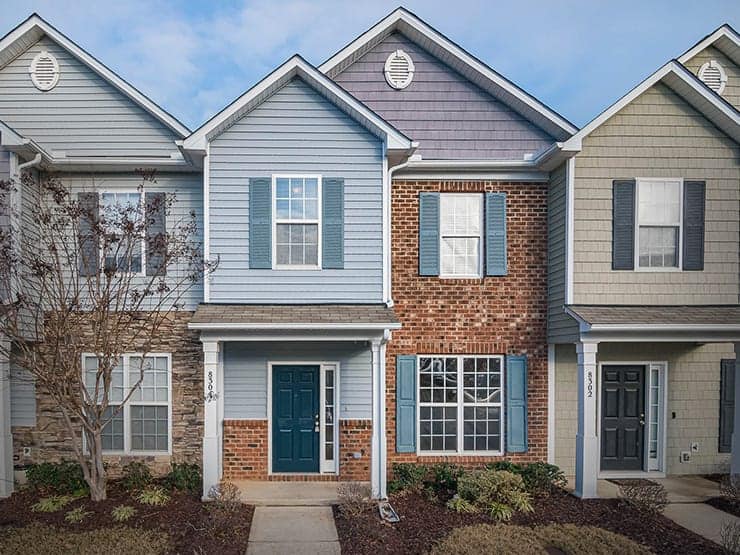
Mortgage ($1,015/month; $12,180/year) 
We recently refinanced our home, which allowed us to reduce our monthly payment by $100, reduce our term by five years, and get rid of the mortgage insurance. Our mortgage costs about $1,015 a month.
Property tax ($487/month; $5,844/year) 
Our property tax is about $487 a month. However, we do live in a Sanitary and Improvement District (SID).
Strata/HOA fees ($0) 
We don’t pay for any HOA fees in our neighborhood.
Home insurance ($146/month; $1,752/year) 
Our home insurance is about $146 a month.
Home maintenance ($30/month; $360/year) 
This category includes: home maintenance, repairs, cleaning, and improvements; household goods and supplies; furniture; and appliances.
We sign up for annual programs that offer discounts for paying a year in advance. As long as we stay on top of regular maintenance schedules, it helps avoid costly expenses down the road.
Home equity opportunity cost ($6,050) 
About the home equity opportunity cost ‘expense’
This category was suggested by The Economist from FI Garage. The intention for sharing this is to calculate the opportunity cost of home ownership versus renting.
In other words: if you invested the amount that’s tied up in your home equity, how much would that be worth after one year of investing (based on a conservative 5% return)?
According to Zillow, our home value appreciated. According to the Zestimate, we have about $121,000 of equity built up in our home.
$121,000 in home equity x 5% = $6,050 in opportunity cost after one year of investing.
2. How much does transportation cost in Omaha?

Vehicle loan ($0) 
We don’t have any car loans on our cars. We paid them all in cash.
Vehicle insurance ($1,034/month; $12,408/year) 
We pay about $1,034 a month for three cars.
My wife has owned her car since moving to Nebraska. So, that is around 2006. It currently has 100k miles and we give it routine maintenance to keep it going. We don’t expect it to last forever, so we’ve been budgeting for a replacement car.
The second car we bought for my mother-in-law, as she helps with our children. We bought it used.
As for the third, I bought it brand new after we had our first child. I previously drove a two-door coupe and it was not child-friendly. This car takes up the lion’s share of our car insurance. When we moved to another insurance company, the rate for my car was comparable. However, we plan to reach out to our insurance company since my car has gotten older now and see if it qualifies for a lower rate.
Gas ($150/month; $1,800/year) 
Our monthly gas bill is $150.
Vehicle maintenance ($74/month; $888/year) 
On average, we spend about $74 a month on car maintenance.
Bike maintenance ($0) 
We don’t bike to work.
Parking and tolls ($40/month; $480/year) 
Parking in Omaha is generally free. However, before I worked remotely, I paid $85 a month for garage parking. I recently returned to work and park a little farther away and pay $2 a day for 10-hour parking.
Transit ($0) 
I live relatively close to my kid’s school and my work. It takes me about 10 minutes to drive to my kids school and 15 minutes to my work. Omaha is not a big city, so it takes no more than about 30 minutes to get anywhere. So, although there is public transportation, it’s more convenient to drive.
3. How much does food cost in Omaha?

Groceries ($500/month; $6,000/year) 
We spend a lot of our money on groceries. We aim to buy and prepare quality food. Thus, we’re comfortable spending $500 a month on groceries. Our belief is that if we eat right, then we could avoid a costly hospital bill.
Related reading: How to Save Money on Groceries (36 Valuable Tips) and Detailed Flashfood Review (Groceries for 50-70% Off)
Eating out ($150/month; $1,800/year) 
I rarely eat out and only for special occasions like a birthday celebration or hanging out with friends. We budget about $150 a month for eating out.
4. How much do utilities and bills cost in Omaha?
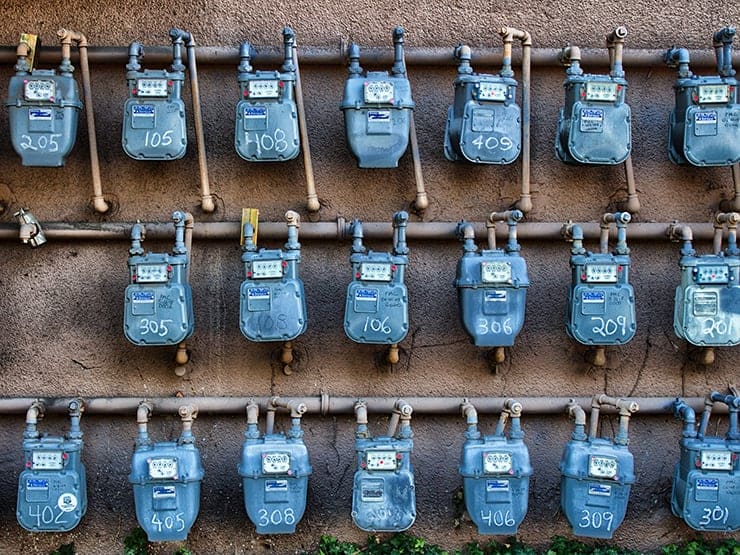
Natural gas ($131/month; $1,572/year) 
We spend about $131 a month on natural gas. However, that bill also includes our water.
Electricity ($110/month; $1,320/year) 
We spend about $110 on electricity each month. We are on a level payment plan with our electric company.
Water ($0) 
Our water bill is included in the natural gas bill.
Garbage and recycling ($0) 
Our garbage fee is included with our property tax.
Internet ($100/month; $1,200/year) 
We pay about $100 per month for our internet.
Home phone ($0) 
We don’t have a house phone.
Cell phone ($112/month; $1,344/year) 
We pay about $112 per month for three cell phones.
Streaming entertainment ($11/month; $132/year) 
We pay $11 for Hulu and get Netflix for free through our cell phone plan.
5. How much do other essentials cost in Omaha?

Life and disability insurance ($530/month; $6,360/year) 
We pay $530 a month for life insurance.
Medical insurance ($0) 
My medical insurance is through my work.
Out-of-pocket medical expenses ($0) 
We have a Health Savings Account, which my employer adds ‘seed money’ to every year. So, technically, we don’t have any out-of-pocket medical expenses.
Clothing and footwear ($80/month; $960/year) 
We budget about $80 a month for clothing; mainly for our children.
Personal care ($176/month; $2,112/year) 
This category includes: haircuts, toiletries and grooming services and supplies.
Haircuts are the biggest expense when it comes to personal care. I get a haircut once a month while my wife gets a cut once a quarter. Although she doesn’t get a cut as frequently, it costs almost the same across the three months.
Technology ($0) 
This category includes essential technology: software and hardware purchases, upgrades, maintenance, and repairs. Non-essentials (video games and consoles, e-readers, security cameras, etc.) aren’t included.
We don’t buy the latest technology. For instance, my wife and I have owned our phones for at least three years. The same applies to our TVs. In our master bedroom, I have my ‘flat screen’ from 2008.
Part 3: Adding it all up
Now that we’ve detailed all of Jonathan’s essential expenses, it’s time to add everything up in some nice, organized tables!
Important notes about the numbers
- Only essential expenses are included.
- Discretionary expenses (e.g. travel, gifts, etc.) are not included.
- Expenses are rounded to the nearest dollar.
- Expenses are displayed in the interviewee’s home currency.
- In this interview, the home currency is US dollars.
- For your convenience, I’ve included a currency converter in each section. I hope you find it useful!
For detailed explanations about which expenses are included (or not) see my How Much Does it Cost to Live the FIRE Life intro post.
How much does it cost to live the FIRE life in Omaha?
1. Housing
| Expense | Monthly (USD) | Annual (USD) |
|---|---|---|
| Mortgage | $1,015 | $12,180 |
| Property tax | $487 | $5,844 |
| Strata/HOA fees | $0 | $0 |
| Home insurance | $146 | $1,752 |
| Maintenance | $30 | $360 |
| TOTAL | $1,678 (with mortgage) $663 (no mortgage) | $20,136 (with mortgage) $7,956 (no mortgage) |
Home equity opportunity cost: $6,050/year
2. Transportation
| Expense | Monthly (USD) | Annual (USD) |
|---|---|---|
| Vehicle loan | $0 | $0 |
| Vehicle insurance | $1,034 | $12,408 |
| Gas | $150 | $1,800 |
| Vehicle maintenance | $74 | $888 |
| Bike maintenance | $0 | $0 |
| Parking and tolls | $40 | $480 |
| Transit | $0 | $0 |
| TOTAL | $1,298 | $15,576 |
3. Food
| Expense | Monthly (USD) | Annual (USD) |
|---|---|---|
| Groceries | $500 | $6,000 |
| Eating out | $150 | $1,800 |
| TOTAL | $650 | $7,800 |
4. Utilities and bills
| Expense | Monthly (USD) | Annual (USD) |
|---|---|---|
| Natural gas | $131 | $1,572 |
| Electricity | $110 | $1,320 |
| Water | $0 | $0 |
| Garbage and recycling | $0 | $0 |
| Internet | $100 | $1,200 |
| Home phone | $0 | $0 |
| Cell phones | $112 | $1,344 |
| Streaming entertainment | $11 | $132 |
| TOTAL | $464 | $5,568 |
5. Other essentials
| Expense | Monthly (USD) | Annual (USD) |
|---|---|---|
| Life and disability insurance | $530 | $6,360 |
| Medical insurance | $0 | $0 |
| Out-of-pocket medical expenses | $0 | $0 |
| Clothing and footwear | $80 | $960 |
| Personal care | $176 | $2,112 |
| Technology | $0 | $0 |
| TOTAL | $786 | $9,432 |
Grand totals
| Expense | Monthly (USD) | Annual (USD) |
|---|---|---|
| Housing | $1,678 (with mortgage) $663 (no mortgage) | $20,136 (with mortgage) $7,956 (no mortgage) |
| Transportation | $1,298 | $15,576 |
| Food | $650 | $7,800 |
| Utilities and bills | $464 | $5,568 |
| Other essentials | $786 | $9,432 |
| TOTAL | $4,876 (with mortgage) $3,861 (no mortgage) | $58,512 (with mortgage) $46,332 (no mortgage) |
Chrissy’s takeaways
Thanks again to Jonathan for sharing his expenses. Prior to this interview, I didn’t know much about Omaha (other than knowing that it’s Warren Buffet’s hometown)! It was interesting for me to learn more about life there and how much it costs. Here are my takeaways:
Housing
Once again, we see how living in a smaller city can lead to big savings when it comes to real estate. Jonathan’s $1,015 per month mortgage payment (for a single-family home) is unheard of in cities like Vancouver and Seattle!
However, I’m surprised by how much he pays in property tax. $5,844 (about $7,300 CAD) is more than what my family pays in Vancouver ($5,000 USD/$6,251 CAD). Given Omaha’s small population and low real estate prices, $5,844 seems high.
However, as Jonathan mentioned, this could be due to his home being in a Sanitary and Improvement District. I would assume this means Jonathan’s family receives a high level of amenities and services—so perhaps it’s worth the high price.
The joys of small city living
I’m jealous of Jonathan and Jaqueline’s commute times—15 and 10 minutes to work (respectively). On top of that, nothing is more than a 30-minute drive away. This is one of the joys of living in a smaller city: everything’s so close!
As Jonathan said, “The less time we have to spend on the road, the more time we get to spend with our family or doing the things we want to do.” They also save on gas, which in turn means a lighter footprint on the environment. There are so many benefits to a low-commute lifestyle!
That car insurance—yikes!
I was surprised to see that Jonathan pays more for car insurance than mortgage payments!!! This is bonkers to me. Granted, he is paying for insurance on three cars (generously including one for his mother-in-law).
They’ve also done well with keeping Jaqueline’s 15-year-old vehicle running and buying her mom’s car used. But still… their car insurance is a big line item in their budget. I hope Jonathan will be able to lower his costs when he renegotiates his insurance rate. (Which will leave them more money for real estate investing!)
Closing thoughts
Jonathan’s cost of living in Omaha lines up with my general observations in this series so far:
- The biggest contributor to the lower cost of living in small cities and towns is their significantly lower housing costs.
- Other expenses tend to be similar or higher compared to large cities. (This still surprises me.)
However, it’s not just about cost savings—smaller cities and towns also offer important lifestyle benefits. Jonathan and Jaqueline’s short commutes are just one example. (For those who regularly endure 60-minute+ commutes, this sounds like a dream!)
I think Omaha sounds like a lovely place to live. (Clearly, Warren Buffet agrees—he still lives in the same house that he bought in 1958!) I hope you enjoyed learning more about the cost of living in this historic city.
Connect with Jonathan
If you’d like to learn more about Jonathan or read more of his content, visit him at his blog, Parent Portfolio. You can also connect with him on Twitter, Instagram and Facebook.
Share your thoughts
Were you surprised by Jonathan’s essential expenses? Are any of them significantly different from where you live? Share your thoughts in the comments, along with your own money-saving tips!
Nadia and her husband live in North Vancouver, BC—one of Vancouver’s most beautiful (and expensive) suburbs. And yet, they’ve found ways to keep their essential spending very low!
Chris lives with his family in Kelowna, BC. It’s as beautiful as Vancouver, with nearly all the amenities you’d want or need… but is it any cheaper? Find out in the interview!
Visit the intro page to learn more about the what and why behind the series and access the complete list of interviews.
Support this blog
If you liked this article and want more content like this, please support this blog by sharing it! Not only does it help spread the FIRE, but it lets me know what content you find most useful. (Which encourages me to write more of it!)
You can also support this blog by visiting my recommendations page and purchasing through the links. Note that not every link is an affiliate link—some are just favourite products and services that I want to share. 🙂
As always, however you show your support for this blog—THANK YOU!

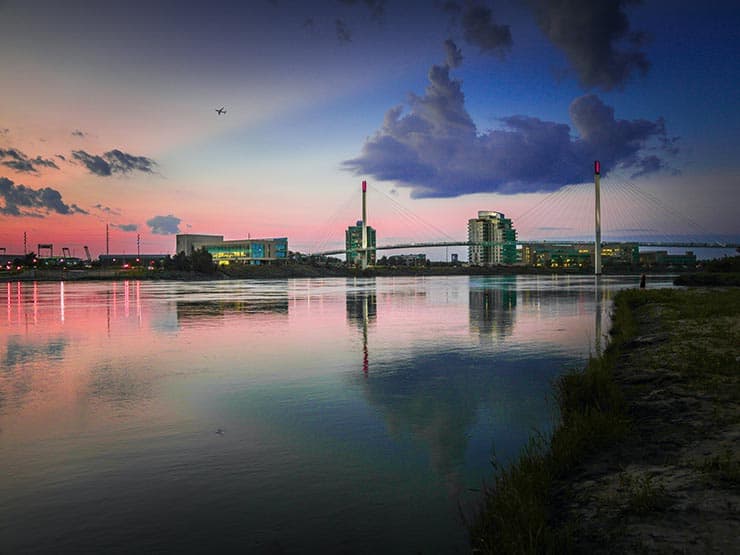
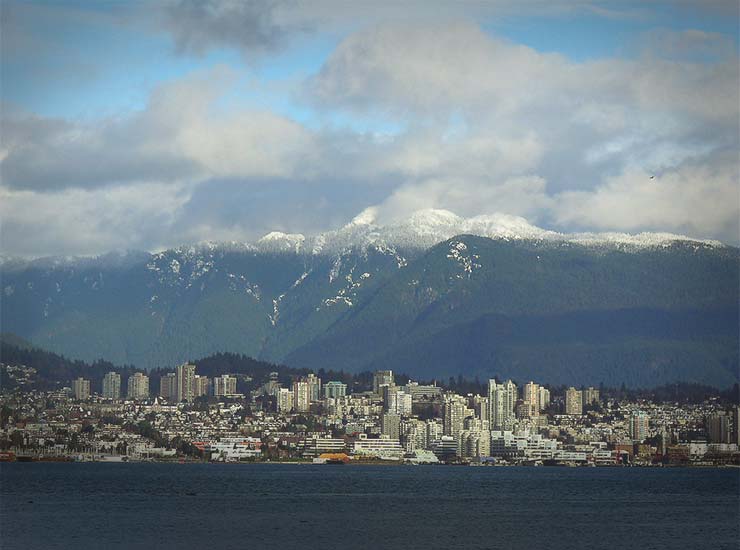


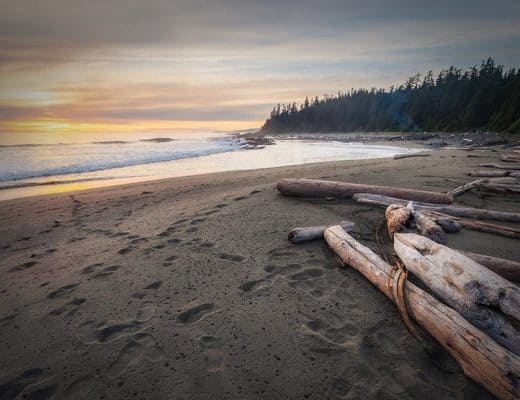


10 Comments
Maria @ Handful of Thoughts
September 15, 2021 at 12:52 pmThe cost of vehicle insurance is shocking. We have and insure 3 vehicles and our costs are nowhere near that high. Hopefully some renegotiating or bundling of insurance can help. And here as a Canadian I always thought health insurance was way more expensive in the US.
Chrissy
September 15, 2021 at 3:29 pmHi Maria—we also have an insure three vehicles through ICBC (which is very expensive) and we are nowhere near that amount in insurance costs. Yes, I hope Jonathan will be able to get that expense way down by negotiating and/or bundling!
Liquid Independence
September 15, 2021 at 2:01 pmI wonder if Jonathan or Jaqueline ever spotted Warren Buffett before. It would be cool to catch him sitting in a McDonald’s enjoying some fries and a Coke. 🙂 I agree that the property tax does seem high for a city smaller than Vancouver. Maybe that translates into excellent local government services. But I don’t know.
Chrissy
September 15, 2021 at 3:32 pmHi Liquid—that’s a great question! I wonder that too, given that Omaha sounds like a quaint little city. The chances of running into other people, including Mr. Buffet, would be pretty good. Yeah, the property taxes really stood out to me. From what I’ve seen around the web, property taxes in the US can vary quite wildly.
Thomas A Waffle
September 15, 2021 at 5:31 pmMidwest cities, like Omaha aren’t quite quaint, but rather sprawling cities with low density that can make driving a car essential but easy. I no longer live in the Midwest but still in a similar city in the NW US with of similar density and size (although smaller actually). The city of Omaha has nearly 500,000 residents and the metro area just under 1 million – compared to Vancouver, Canada with a 600,000 residents (in half the space) and a metro area of 2.5 million.
I am also curious to know what this expensive third vehicle could be to require such high auto insurance but if it works for them…
I’m not saying that the chances are slim of running into someone you know, or know of though. Although I’ve managed to live in the same city as my cousins for nearly 20 years and only run into them a few times, I also regularly see acquaintances or friends of the family, or local politicians. I think that has more to do with frequenting businesses and events of people with similar interests.
Chrissy
September 15, 2021 at 7:39 pmHello Thomas—thanks for the education on the population structure of Midwest cities. I have never visited one myself, so your comment was enlightening. It makes sense now, how traffic can be so light in Omaha. I appreciate the info.
What you’ve said about running into people is very true. Perhaps if Jonathan frequented McDonald’s for breakfast everyday, he’d have a higher chance of meeting Warren Buffet! 😆
Thanks for taking the time to leave a thoughtful, insightful comment.
Torrie @ To Love and To Learn
September 16, 2021 at 4:29 pmI also balked at the car insurance bill! I once insured 3 cars, but it only cost around $150/month. Granted, they were much older cars (two before 2000 and one that was a 2007), but I was still surprised. Hopefully he can renegotiate that way down!
Chrissy
September 16, 2021 at 4:54 pmHi Torrie—wow, your insurance for three cars was really affordable. It would cost about double that to fully insure three cars here in Vancouver (which would still be a fraction of what Jonathan’s paying).
I think we’re all unanimously rooting for him to get that car insurance bill WAY down!
Rick
September 17, 2021 at 2:41 pmA SID rolls developer costs into taxes for future property owners. Other states have similar programs. Additionally, Nebraska has fairly high property taxes to start with. I am a bit confused by the high life insurance cost.
Chrissy
September 17, 2021 at 3:34 pmHi Rick—thanks for this informative comment. The way I see it, the higher taxes in a SID are like a payment plan for the developer costs. It’s an interesting way to do it!
I didn’t realize that Nebraska has higher property taxes. (But I just saw your Twitter comment. It sounds like they put the money to good use, so it’s not necessarily a bad thing.)
I also noticed Jonathan’s high life insurance cost. Perhaps it’s whole life?